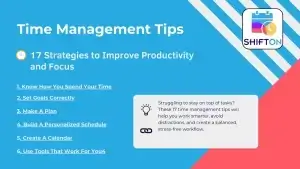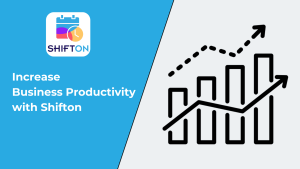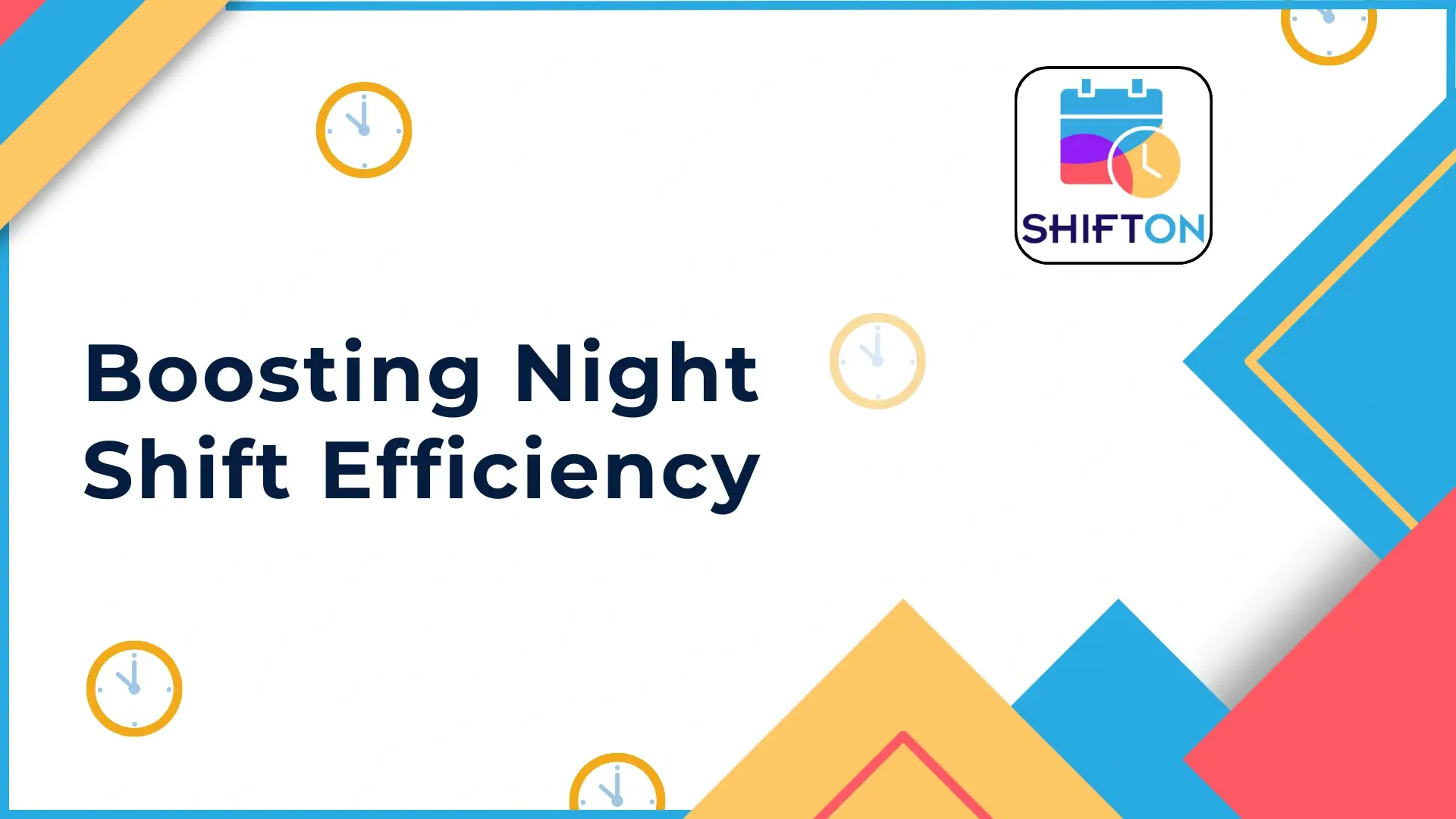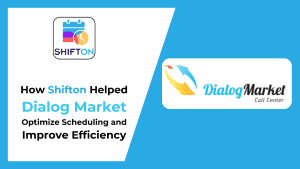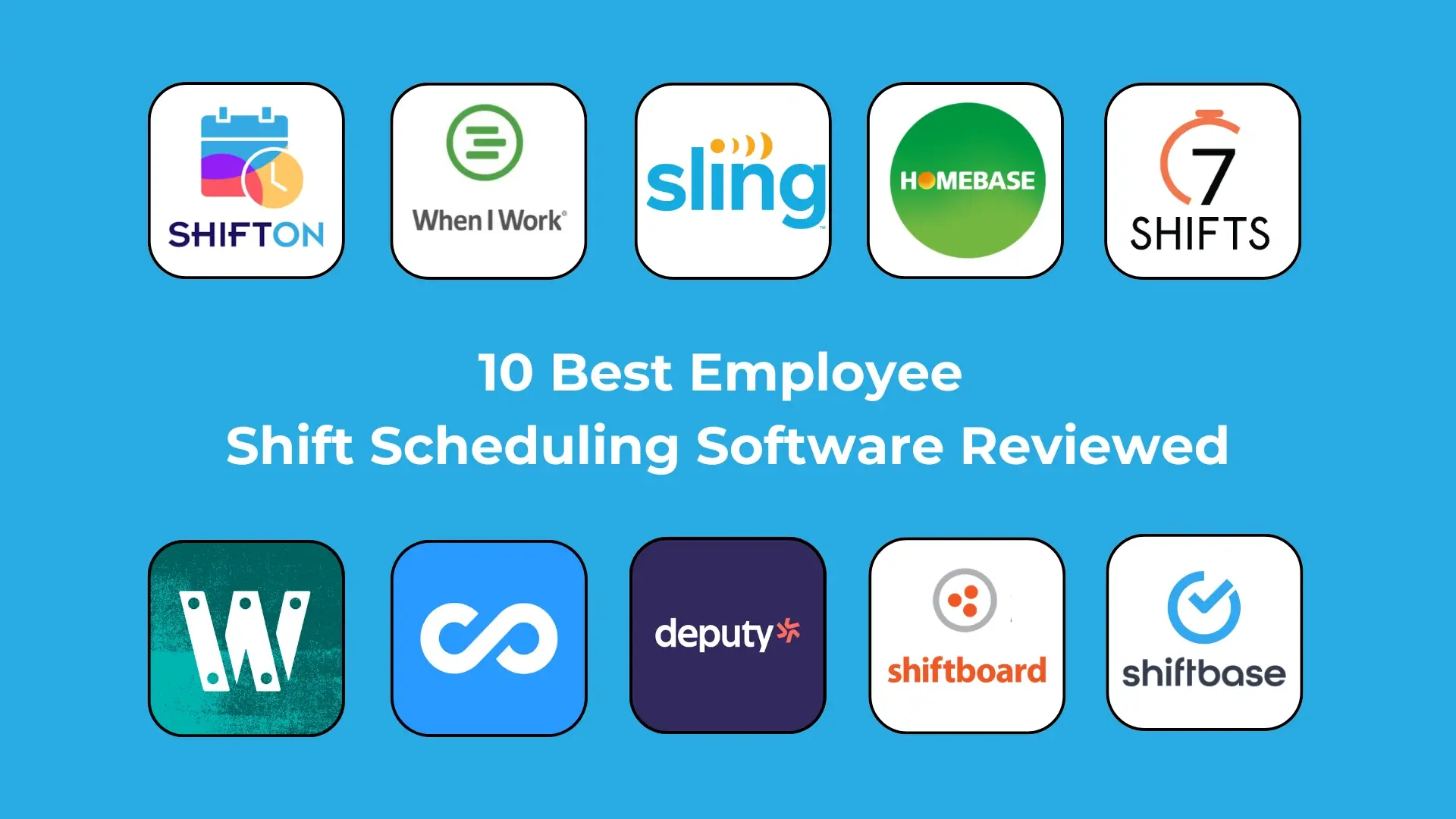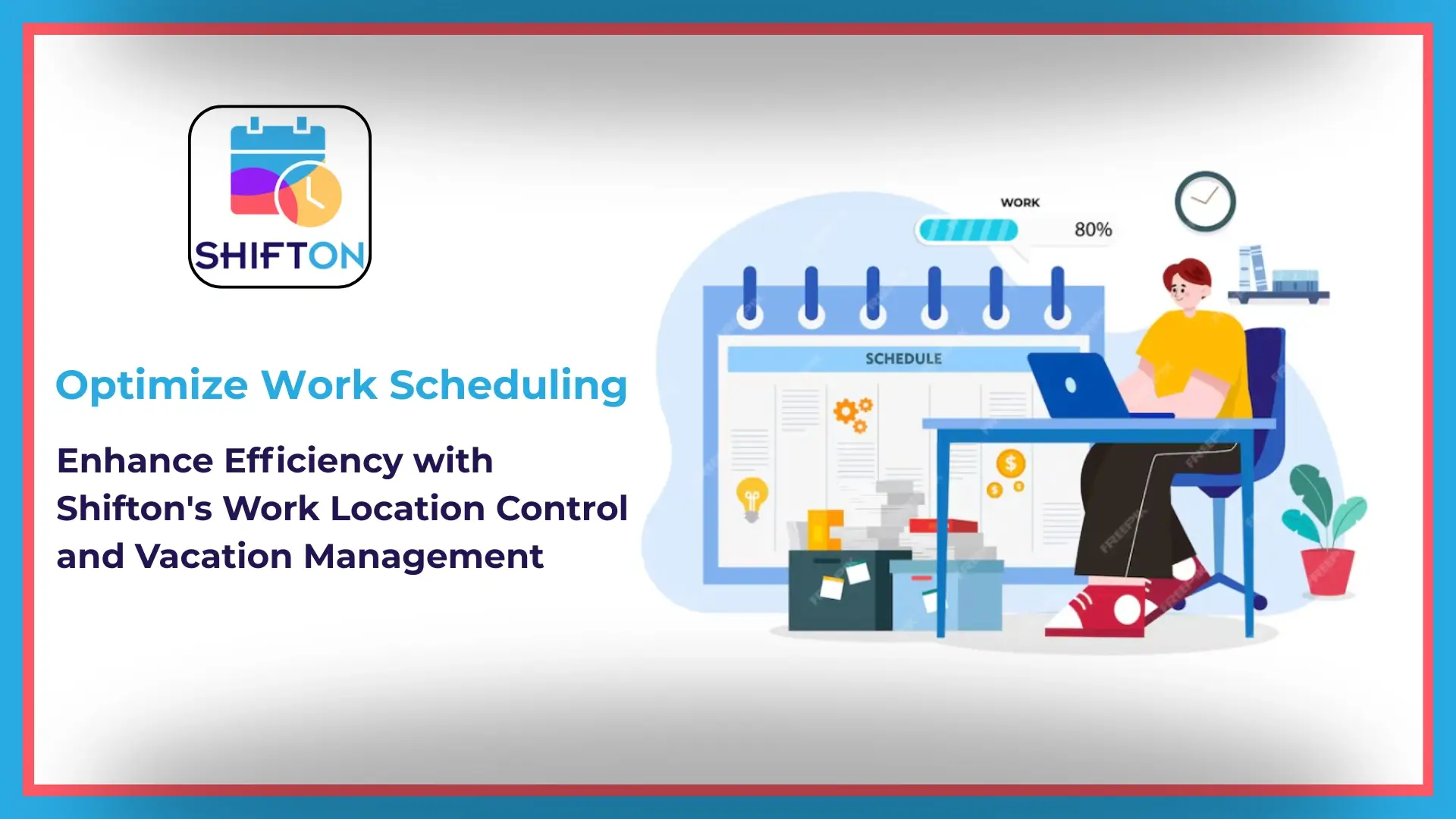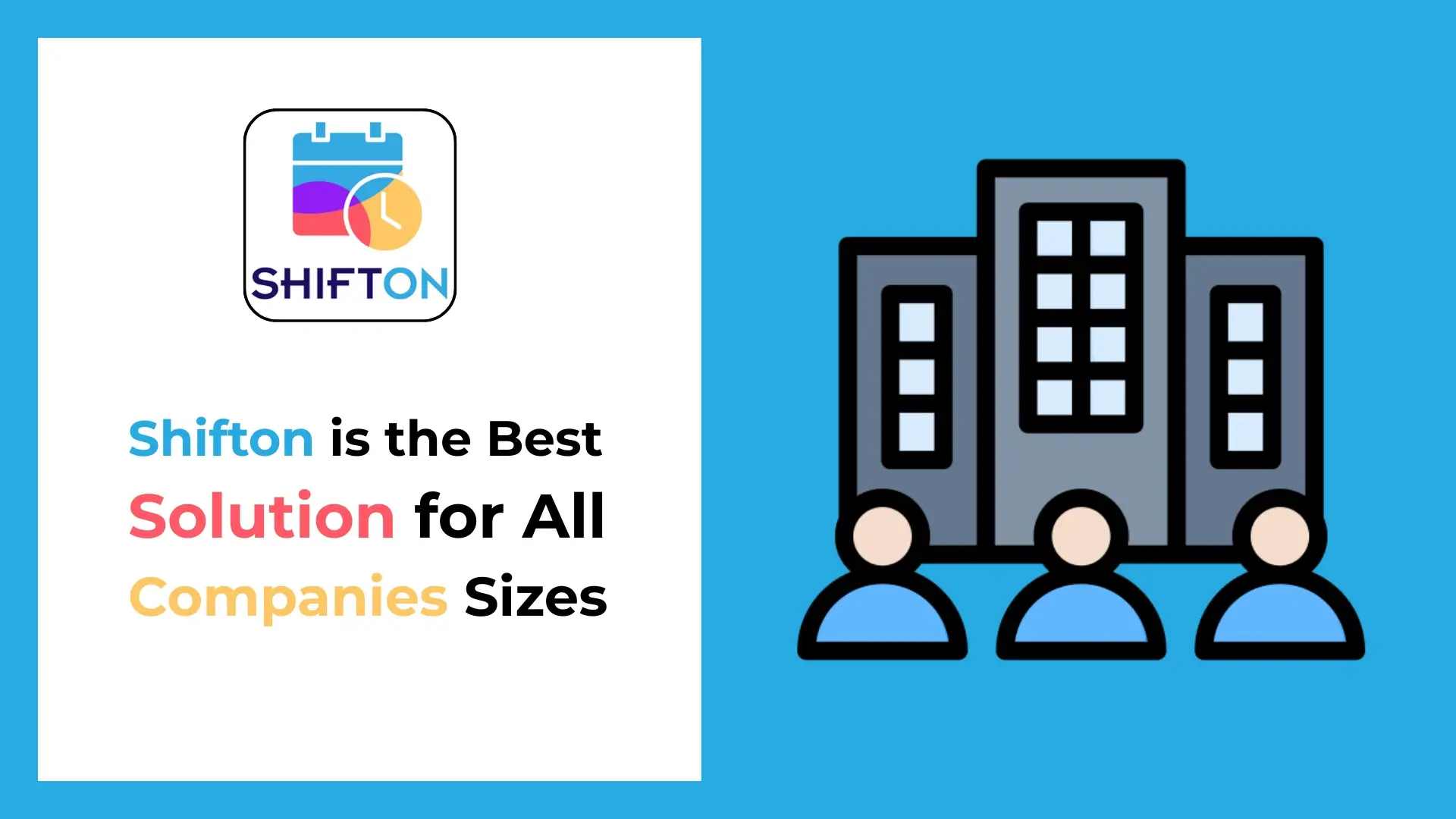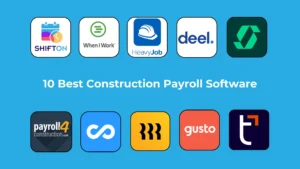Have you got special medical scheduling software in your healthcare business? Automation is a must even in such a socially-oriented industry. When you want to enhance the efficiency of your healthcare institution, you need more than high-end diagnostics and medical equipment. Software products for healthcare management are also worth considering. Let’s discover, using Shifton scheduling software for healthcare as an example, how your workflow can elevate to a new level of efficiency and client-friendliness.
Ensuring quality care for your clients and patients is at the heart of the healthcare industry.
Beyond medical expertise, this requires the right tools and strategies to empower your care team, enhance communication, streamline operations, and keep everyone well-informed. Of course, you can choose a couple of tools to provide all these functions, yet the better idea is to select one tool that embodies them impeccably.
What Is Quality of Care in Healthcare?
Quality of care in healthcare refers to delivering safe, effective, patient-centred, and timely medical services that result in the best possible outcomes. It encompasses clear communication, empathy, evidence-based treatment, and respect for patient preferences.
Providing high-quality patient care means ensuring that patients receive the right care at the right time, tailored to their individual needs. Healthcare professionals must prioritise safety, accuracy, and compassion to optimise patient experiences and health outcomes.
Quality of Care Examples
Examples of excellent patient care include:
- Personalised Treatment Plans – Tailoring medical care based on individual patient needs, preferences, and medical history.
- Effective Communication – Ensuring patients fully understand their diagnosis, treatment options, and medication instructions.
- Respect and Dignity – Acknowledging patient concerns, maintaining confidentiality, and treating every individual with care.
- Timely Interventions – Reducing wait times, promptly addressing symptoms, and following up on treatments.
- Holistic Approach – Addressing mental, emotional, and physical health rather than focusing solely on symptoms.
By implementing these patient care techniques, healthcare providers can significantly improve patient care and create positive healthcare experiences.
Why Is Quality of Care Important?
Ensuring high-quality patient care is crucial for patient safety, satisfaction, and overall health outcomes. When healthcare providers focus on effective patient care, they not only enhance medical treatment success rates but also build trust and loyalty among patients.
Here’s why providing quality care should be a top priority:
- Better Health Outcomes – Patients receive accurate diagnoses, timely treatments, and personalised care plans, leading to faster recoveries.
- Increased Patient Satisfaction – A positive healthcare experience makes patients more likely to follow medical advice and return for future care.
- Reduced Medical Errors – Following best practices and maintaining attention to detail prevents avoidable complications and misdiagnoses.
- Stronger Patient-Provider Relationships – Respectful communication and empathy help patients feel valued and heard.
- Efficient Use of Resources – Well-managed patient care reduces unnecessary hospital visits, readmissions, and healthcare costs.
Providing quality care for patients isn’t just about treating illnesses—it’s about creating a healthcare system that prioritises well-being, efficiency, and respect.
Communication for Healthcare Professionals
Effective communication is a cornerstone of quality patient care. Healthcare professionals must:
- Clearly explain diagnoses and treatment plans to prevent confusion.
- Use simple language when discussing medical conditions with patients.
- Listen actively to patient concerns and provide reassurance.
- Encourage patient participation in decision-making regarding their health.
- Provide written instructions to help patients remember medication and care guidelines.
Strong patient-provider communication leads to better treatment adherence, fewer misunderstandings, and higher patient satisfaction.
Empathy and Understanding in Patient Interactions
Patients often feel vulnerable when seeking medical care. Demonstrating empathy and understanding is essential for providing exceptional patient care. Healthcare providers should:
- Acknowledge patient concerns and validate their feelings.
- Offer reassurance and emotional support when delivering diagnoses or treatment plans.
- Be patient and attentive during consultations, making patients feel heard.
- Use compassionate language to create a comforting healthcare environment.
By focusing on emotional as well as physical well-being, healthcare professionals can significantly enhance patient care.
Timely and Efficient Service Delivery
Delayed treatments can have serious health consequences. Providing timely and efficient care ensures:
- Faster diagnoses and treatments to prevent complications.
- Reduced patient wait times, improving overall experience.
- Better resource management, preventing overcrowded facilities.
- Improved staff coordination, ensuring smooth patient transitions between departments.
Optimising patient care through efficient service delivery results in higher patient trust and better medical outcomes.
Respect for Patient Privacy, Preferences, and Dignity
Patients have the right to privacy, dignity, and autonomy in their healthcare experience. Healthcare professionals should:
- Maintain confidentiality of patient information.
- Respect patient preferences regarding treatments and procedures.
- Allow patients to participate in decisions about their care.
- Provide a comfy and private care environment whenever possible.
By prioritising patient dignity and rights, healthcare providers build trust and strengthen patient relationships.
Top Practices for Delivering Quality Patient Care
Delivering top-notch patient care requires a patient-focused approach that emphasises respect, communication, and efficiency. Below are 20 proven strategies that healthcare professionals can employ to improve patient care and enhance overall healthcare experiences.
1. Show Respect
Patients should always feel valued and respected when receiving care. This includes:
- Addressing them by their preferred name.
- Maintaining eye contact and actively listening.
- Acknowledging their concerns and taking them seriously.
- Providing privacy during examinations and procedures.
2. Express Gratitude
A simple “thank you” can create a positive patient experience. Healthcare providers should:
- Show appreciation for patient cooperation.
- Acknowledge caregivers and family members who assist with care.
- Foster an environment where staff acknowledge each other’s contributions.
3. Coordinate Patient Care With Other Providers
Smooth coordination between nurses, doctors, specialists, and therapists ensures optimal patient care. Best practices include:
- Sharing up-to-date patient records to avoid duplicate tests or missed diagnoses.
- Conducting team huddles or case discussions for complex patient needs.
- Ensuring patients receive consistent guidance across different departments.
4. Provide Emotional Support
Patients often experience stress and anxiety during medical visits. Providing emotional support helps alleviate their concerns:
- Offer reassurance and compassion.
- Explain procedures in a calm and friendly manner.
- Encourage patients to ask questions and express their fears.
5. Engage Patients in Their Care Plan
Patients who actively participate in their treatment are more likely to follow medical advice and achieve better outcomes. To foster engagement:
- Discuss treatment options openly and transparently.
- Let patients express preferences and concerns.
- Provide educational materials about their condition and self-care.
6. Address Your Patients’ Physical Needs
Ensuring comfort and basic needs is a vital part of quality patient care. Healthcare providers should:
- Regularly check if the patient is in pain or discomfort.
- Help with mobility for patients with limited movement.
- Ensure proper nutrition, hydration, and rest for inpatients.
7. Support Your Patients’ Mental Health
Mental health is just as important as physical wellbeing. Healthcare professionals can:
- Screen for anxiety, depression, or emotional distress.
- Encourage discussions about mental health and provide resources.
- Offer referrals to psychologists or counsellors when needed.
8. Help Your Patients Manage Their Medications
Medication errors can be dangerous. To improve patient safety:
- Provide clear and detailed medication instructions.
- Use medication reconciliation to prevent duplicate or conflicting prescriptions.
- Educate patients on potential side effects and interactions.
9. Deliver Quality Patient Care Experiences
Positive patient experiences lead to higher satisfaction and better health outcomes. Ways to provide outstanding patient care include:
- Minimising waiting times and delays.
- Keeping patients informed about their care process.
- Making sure that healthcare facilities are clean, safe, and welcoming.
10. Prioritise Training and Education
Continuous training and skill development ensure effective patient care. Healthcare organizations should:
- Provide regular workshops on communication and empathy.
- Update staff on medical advancements and best practices.
- Train teams on customer service in healthcare to enhance patient interactions.
11. Increase Access to Care
Many patients struggle with accessing timely care due to financial, geographic, or scheduling barriers. To improve accessibility:
- Provide telehealth options for remote consultations.
- Extend clinic hours for working patients.
- Reduce appointment wait times for urgent needs.
12. Engage Patients and Families
Families play a crucial role in patient recovery and well-being. Healthcare providers should:
- Encourage family involvement in decision-making.
- Offer caregiver education on how to support patient recovery.
- Keep families informed about treatment plans and progress.
13. Improve Communication
Strong communication skills prevent misunderstandings and improve patient trust. Best practices include:
- Speaking clearly and using everyday terms.
- Confirming patient understanding by asking follow-up questions.
- Using written instructions and visual aids when necessary.
14. Stay On Top of Daily Tasks
An organised workflow leads to better patient care in hospital settings. To maintain efficiency:
- Use checklists to track patient tasks.
- Assign clear responsibilities to each staff member.
- Minimise administrative burdens through digital documentation.
15. Measure and Monitor Quality
Tracking key performance indicators (KPIs) helps healthcare providers enhance patient care. This includes:
- Measuring patient satisfaction scores.
- Monitoring hospital readmission rates.
- Reviewing treatment success rates.
16. Set Tangible Goals
Setting realistic, measurable goals helps maintain continuous improvement in patient care. Goals should focus on:
- Reducing average patient wait times.
- Increasing treatment adherence rates.
- Enhancing overall patient satisfaction.
17. Relay Progress Back to Staff
Keeping healthcare teams informed about quality care improvements boosts motivation and engagement.
- Share success stories and positive feedback.
- Recognise staff who excel in patient care.
- Encourage collaborative efforts to tackle challenges.
18. Gather Patient Feedback
Patient insights help healthcare providers improve service quality. Feedback collection methods include:
- Surveys and satisfaction questionnaires.
- One-on-one interviews with patients and caregivers.
- Digital platforms for anonymous reviews and suggestions.
19. Hire the Right People and Properly Train Them
Qualified, compassionate healthcare staff make a significant difference in patient care quality. Best practices include:
- Hiring candidates with strong interpersonal and medical skills.
- Providing ongoing training and mentorship programmes.
- Ensuring team alignment with patient-centered values.
20. Streamline Care Management with Technology
Technology enhances efficiency, communication, and patient safety. Healthcare facilities should:
- Use electronic health records (EHRs) to streamline patient data.
- Implement automated appointment scheduling.
- Utilise AI-powered chatbots for patient enquiries.
By integrating these patient care improvement strategies, healthcare providers can optimise patient care while ensuring better outcomes and experiences.
Barriers to Delivering High Quality Care
Despite efforts to improve patient care, healthcare providers often face obstacles that hinder service quality and efficiency. Identifying and addressing these barriers is essential for ensuring high-quality patient care.
1. Limited Staffing and High Workloads
- Understaffed facilities result in longer patient wait times and rushed consultations.
- Healthcare professionals who are overworked are more likely to experience burnout, affecting patient interactions and decision-making.
- Solution: Implement better workforce planning and consider flexible scheduling solutions to optimise staffing levels.
2. Inadequate Communication Among Staff
- Miscommunication between nurses, doctors, and administrative staff can lead to treatment delays and errors.
- A lack of a centralised patient information system results in double-ups in tests and conflicting scripts.
- Solution: Use electronic health records (EHRs) and team collaboration tools to streamline communication.
3. Lack of Patient Engagement
- Patients who feel uninformed or excluded from their care plans are less likely to follow medical advice.
- Limited access to educational resources can cause confusion about medications and treatments.
- Solution: Encourage shared decision-making, provide clear health information, and use patient portals for better engagement.
4. Financial Barriers to Care
- High healthcare costs stop patients from seeking timely medical attention.
- Limited insurance coverage leads to delayed treatments and poorer health outcomes.
- Solution: Offer flexible payment options, financial assistance programmes, and telehealth services to increase accessibility.
5. Resistance to Technology Adoption
- Some healthcare professionals hesitate to integrate new systems, leading to inefficiencies.
- Old technology slows down admin processes and increases the risk of medical errors.
- Solution: Provide ongoing training for healthcare staff on new patient management technologies.
6. Regulatory and Compliance Challenges
- Healthcare providers must follow strict regulations on patient data protection, safety protocols, and medical procedures.
- Compliance with constantly changing laws adds admin burdens.
- Solution: Implement automated compliance tracking tools to reduce manual paperwork and ensure regulatory adherence.
7. Long Wait Times and Scheduling Inefficiencies
- Overbooked appointments frustrate patients and reduce the quality of care.
- Last-minute cancellations and no-shows create scheduling gaps, leading to wasted resources.
- Solution: Use automated scheduling systems and offer virtual check-in options to improve patient flow.
8. Limited Access to Mental Health Services
- Many healthcare facilities focus on physical health while neglecting mental well-being.
- Patients struggling with anxiety, depression, or chronic stress often do not receive adequate care.
- Solution: Integrate mental health screenings, therapy referrals, and emotional support programmes into routine care.
By addressing these hurdles, healthcare providers can enhance patient care, improve efficiency, and create a more patient-centered healthcare system.
How Shifton Can Improve Patient Care
Effective patient care in hospitals and healthcare facilities depends on well-organised workforce management. Ensuring the right number of qualified staff are available at the right time is essential for delivering high-quality patient care. Shifton, a cloud-based employee scheduling service, helps healthcare providers optimise shift planning, improve team coordination, and enhance patient experiences.
1. Efficient Shift Scheduling for Healthcare Staff
- Prevents understaffing and overstaffing, ensuring consistent patient care quality.
- Allows managers to quickly adjust shifts to accommodate unexpected changes, such as emergency cases or staff being away.
- Supports rotating, fixed, and flexible scheduling, making it easier to match patient demand with workforce availability.
2. Reducing Administrative Burdens
- Automates shift planning, reducing manual scheduling errors.
- Saves time for hospital administrators and nursing managers, allowing them to focus on patient care improvement.
- Ensures staff members are scheduled according to legal working hours and rest requirements, preventing burnout.
3. Improving Team Communication and Coordination
- Provides a centralised platform where staff can access their schedules anytime.
- Enables real-time notifications for shift changes, reducing confusion and missed shifts.
- Helps healthcare professionals coordinate patient care efficiently across multiple departments.
4. Enhancing Patient Care Accessibility
- Ensures that hospitals, clinics, and emergency care units always have the required staff for timely medical help.
- Helps maintain shorter wait times for patients, improving overall satisfaction.
- Reduces scheduling conflicts, ensuring continuous coverage for critical care units.
5. Supporting Work-Life Balance for Healthcare Workers
- Allows staff to request shift changes or swap shifts when necessary, reducing stress and improving morale.
- Helps prevent burnout and exhaustion, leading to more engaged and attentive healthcare professionals.
- Encourages better retention of skilled healthcare workers, leading to long-term patient care stability.
6. Optimising Workforce Utilisation
- Tracks staffing needs based on historical trends and patient inflow.
- Helps ensure the right personnel are assigned to the right roles, avoiding inefficiencies.
- Makes scheduling adjustments easier, improving operational efficiency in hospitals and clinics.
Shifton simplifies workforce management in healthcare, helping organisations deliver better patient care, reduce operational inefficiencies, and improve overall service quality.
To Sum It Up
Delivering high-quality patient care requires a strategic approach that focuses on effective communication, patient engagement, and workforce efficiency. Healthcare providers can enhance patient experiences by implementing best practices, utilising technology, and overcoming common barriers.
Key Takeaways:
- Patient-centred care improves treatment outcomes and satisfaction.
- Effective communication reduces misunderstandings and enhances trust.
- Timely service delivery ensures better health results and efficiency.
- Engaging patients in their care plans leads to higher adherence to treatments.
- Addressing physical and mental health needs provides holistic patient care.
- Workforce scheduling optimisation prevents staff burnout and improves service levels.
- Technology-driven solutions, such as Shifton, help streamline care management and improve overall efficiency.
By implementing these ways to improve patient care, healthcare facilities can ensure quality care for patients, optimise resources, and maintain a patient-first approach.





